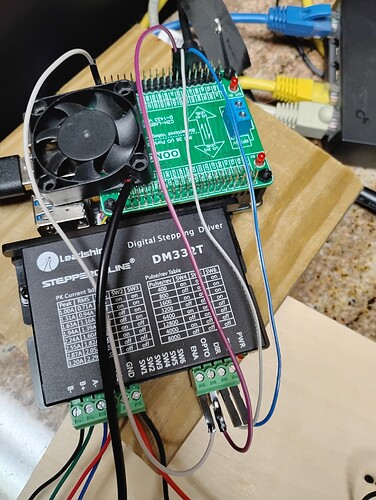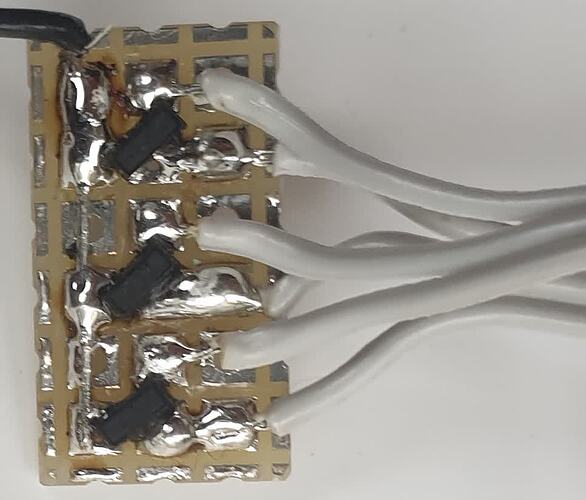Hello There,
I am using a logic level shifter and some Python3 source to test the BeagleY-AI. My stepper motor driver is a DM332T.
This is the item for level shifting:
Has anyone used this level shifter successfully with the BeagleY-AI? If yes and if you have used it successfully, please reply with some type of data that I can use.
Seth
P.S. With the DM332T, my PSU/Bench Supply shuts down when I run the Python3 source which is found below:
#!/usr/bin/python3
import gpiod
import time
gpio12 = gpiod.find_line('GPIO12')
gpio12.request(consumer='beagle', type=gpiod.LINE_REQ_DIR_OUT, default_val=0)
gpio6 = gpiod.find_line('GPIO6')
gpio6.request(consumer='beagle', type=gpiod.LINE_REQ_DIR_OUT, default_val=0)
gpio13 = gpiod.find_line('GPIO13')
gpio13.request(consumer='beagle', type=gpiod.LINE_REQ_DIR_OUT, default_val=0)
try:
gpio13.set_value(1)
time.sleep(0.5)
while True:
gpio6.set_value(1)
gpio12.set_value(1)
time.sleep(4)
gpio6.set_value(0)
gpio12.set_value(1)
time.sleep(4)
except KeyboardInterrupt:
gpio13.set_value(0)
pass
print("Hey!")
I got most of the source from the docs.beagleboard.org page under the header BeagleY-AI.

